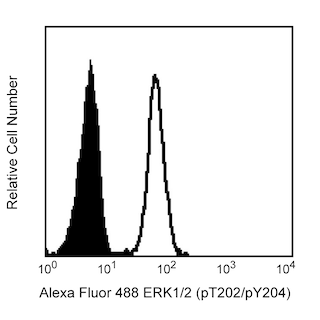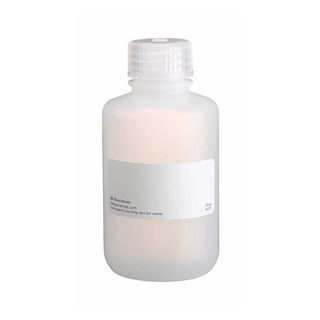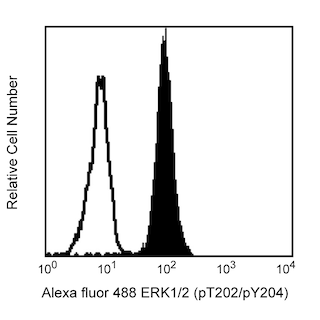-
抗体試薬
- フローサイトメトリー用試薬
-
ウェスタンブロッティング抗体試薬
- イムノアッセイ試薬
-
シングルセル試薬
- BD® AbSeq Assay | シングルセル試薬
- BD Rhapsody™ Accessory Kits | シングルセル試薬
- BD® Single-Cell Multiplexing Kit | シングルセル試薬
- BD Rhapsody™ Targeted mRNA Kits | シングルセル試薬
- BD Rhapsody™ Whole Transcriptome Analysis (WTA) Amplification Kit | シングルセル試薬
- BD® OMICS-Guard Sample Preservation Buffer
- BD Rhapsody™ ATAC-Seq Assays
- BD Rhapsody™ TCR/BCR Next Multiomic Assays
-
細胞機能評価のための試薬
-
顕微鏡・イメージング用試薬
-
細胞調製・分離試薬
-
- BD® AbSeq Assay | シングルセル試薬
- BD Rhapsody™ Accessory Kits | シングルセル試薬
- BD® Single-Cell Multiplexing Kit | シングルセル試薬
- BD Rhapsody™ Targeted mRNA Kits | シングルセル試薬
- BD Rhapsody™ Whole Transcriptome Analysis (WTA) Amplification Kit | シングルセル試薬
- BD® OMICS-Guard Sample Preservation Buffer
- BD Rhapsody™ ATAC-Seq Assays
- BD Rhapsody™ TCR/BCR Next Multiomic Assays
- Japan (Japanese)
-
Change country/language
Old Browser
Looks like you're visiting us from {countryName}.
Would you like to stay on the current country site or be switched to your country?



.png)

Analyses of BTK (pY223)/ ITK(pY180) expression by Human and Mouse Cells. Human Cells Panel 1a: Flow cytometric analysis of BTK (pY223) expressed by human Ramos cells. Serum-starved Ramos cells (Human Burkitt's lymphoma cell line) were either not stimulated (dashed line histogram) or stimulated (solid line histogram) with Goat F(ab')2 Anti-Human IgM (Southern Biotech, Cat. No. 2022-14) at 37°C for 2 minutes. Cells were fixed in BD Cytofix™ Buffer (Cat. No. 554655; 37°C for 10 min) and permeabilized in BD Phosflow™ Perm Buffer III (Cat. No. 558050) on ice (30 min). Cells were then stained with BD Phosflow™ PE Mouse Anti-Btk (pY223)/Itk (pY180) (Cat. No. 562753). Histograms showing BTK (pY223) expression were generated for gated events with the forward and side-light scatter characteristics of intact cells using a BD FACSCanto™ II Flow Cytometer System. Panel 1b: Western blot analysis of BTK (pY223) expressed by Ramos cells. Lysates from 1 million unstimulated (C) and Anti-IgM stimulated (T) Ramos cells were blotted using Purified Btk (pY223)/Itk (pY180) antibody (0.125, 0.063, and 0.032 μg/ml for Lanes 1, 2, and 3, respectively), HRP Goat Anti-Mouse Ig (Cat. No. 554002) and a chemiluminescent detection system. BTK (pY223) was identified as band of ~77 kDa. Mouse Cells Panel 2a: Flow cytometric analysis of BTK (pY223) expressed by mouse A20 cells. A20 cells (mouse B lymphoma cell line) were either not stimulated (dashed line histogram) or were stimulated (solid line histogram) with Rabbit Anti-Mouse IgG (H+L) (Jackson, Cat. No. 315-005-003) at 37˚C for 2 minutes. The cells were fixed, permed, stained and analyzed by flow cytometry as described above. Panel 2b: Western blot analysis of BTK (pY223) expressed by mouse A20 cells. Lysates from 1 million untimulated (C) and Anti-IgM stimulated (T) A20 cells were blotted as described above with Purified Mouse Anti-Btk (pY223)/Itk (pY180) antibody at 0.032 µg/ml. Lower MW band at 42 kDa represents actin.

.png)

BD Phosflow™ PE Mouse anti-Btk (pY223)/Itk (pY180)

BD Phosflow™ PE Mouse anti-Btk (pY223)/Itk (pY180)
.png)
Regulatory Statusの凡例
Any use of products other than the permitted use without the express written authorization of Becton, Dickinson and Company is strictly prohibited.
Preparation and Storage
Product Notices
- This reagent has been pre-diluted for use at the recommended Volume per Test. We typically use 1 × 10^6 cells in a 100-µl experimental sample (a test).
- Please refer to www.bdbiosciences.com/us/s/resources for technical protocols.
- For fluorochrome spectra and suitable instrument settings, please refer to our Multicolor Flow Cytometry web page at www.bdbiosciences.com/colors.
- Caution: Sodium azide yields highly toxic hydrazoic acid under acidic conditions. Dilute azide compounds in running water before discarding to avoid accumulation of potentially explosive deposits in plumbing.
- Source of all serum proteins is from USDA inspected abattoirs located in the United States.
関連製品






The N35-86 reacts with human and mouse Bruton's tyrosine kinase that is phosphorylated at the tyrosine 223 position, Btk (pY223). Btk is also known as agammaglobulinaemia tyrosine kinase (ATK) and B-cell progenitor kinase (BPK). Btk is a nonreceptor tyrosine kinase whose function is critical for proper B cell development and signaling. It is a member of the Tec family of kinases which includes Tec and Itk. In addition to an N-terminal pleckstrin homology (PH) domain, the Tec proteins contain Src homology domains 2 and 3 (SH2 and SH3) and a stretch of 60-80 amino acids between the PH and SH3 domains termed the Tec homology domain. The activity of Btk is regulated by Src-mediated phosphorylation of the kinase domain at tyrosine 551. This event induces Btk kinase activity and subsequent autophosphorylation at tyrosine 223 in the SH3 domain. Phosphorylated Btk then associates with the cell membrane via the interaction of the PH domain with phosphatidylinositol 3, 4, 5-triphosphate. The PH domain is essential for proper activation and function of Btk. A mutation in the PH domain results in Xid, murine X-linked immunodeficiency, and human X-linked agammaglobulinemia. The orthologous phosphorylation site for rat BTK is Y224. Crossreactivity with human Itk (pY180) was confirmed by immunoprecipitation and Western blot analyses using the N35-86 antibody.

Development References (4)
-
Desiderio S. Role of Btk in B cell development and signaling. Curr Opin Immunol. 9(4):534-540. (Biology). View Reference
-
Mahajan S, Fargnoli J, Burkhardt AL, Kut SA, Saouaf SJ, Bolen JB. Src family protein tyrosine kinases induce autoactivation of Bruton's tyrosine kinase. Mol Cell Biol. 1995; 15:5304-5311. (Biology). View Reference
-
Marshall AJ, Niito H, Yun TJ, Clark EA. Regulation of B-cell activation and differentiation by the phosphatidylinositol 3-kinase and phospholipase Cγ pathway. Immunol Rev. 2000; 176:30-46. (Biology). View Reference
-
Rawlings DJ, Scharenberg AM, Park H, et al. Activation of BTK by a phosphorylation mechanism initiated by SRC family kinases. Science. 1996; 271:822-825. (Biology). View Reference
Please refer to Support Documents for Quality Certificates
Global - Refer to manufacturer's instructions for use and related User Manuals and Technical data sheets before using this products as described
Comparisons, where applicable, are made against older BD Technology, manual methods or are general performance claims. Comparisons are not made against non-BD technologies, unless otherwise noted.
For Research Use Only. Not for use in diagnostic or therapeutic procedures.
Report a Site Issue
This form is intended to help us improve our website experience. For other support, please visit our Contact Us page.